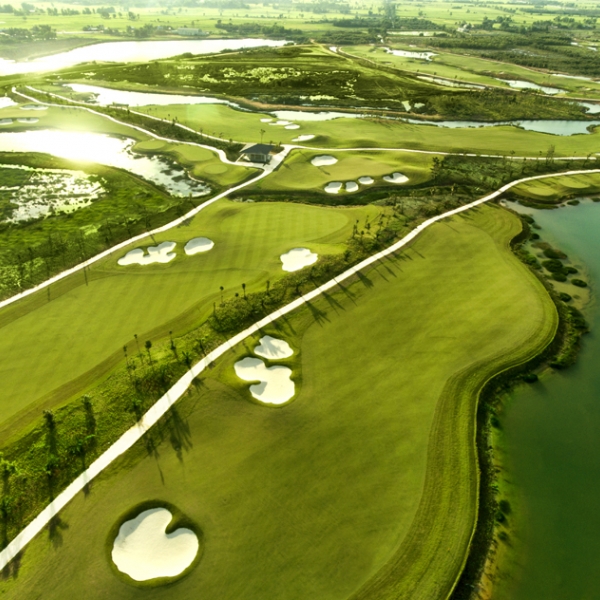When are you allowed to use a provisional ball?
A player can use a provisional ball only if they determine that their previous ball is OB (out of bounds) or is lost outside of a penalty area, in the form of a stroke and distance penalty – meaning a penalty of 1 stroke and a replay from the starting position.
However, if the player thinks that original ball could be lost in the red or yellow penalty area (water hazard), they will not be allowed to use the provisional ball. If they still determined to play again from the same position, the second ball played will be considered the ball in play in place of the original ball, thus resulting in a 1 stroke penalty.
Notify before using the provisional ball
Once the golfer decides to use the provisional ball, they are required to notify the rest of the group before the stroke is made. This notice should include the word “provisional” or other relating words indicating that you will be using a provisional ball under Rule 18.3.
If you do not clearly state the above, or fail to make it clear that you will use this right, your ball will not be counted as a provisional ball. Instead, the ball you hit after the original ball becomes the ball in play, and the player incurs a penalty of 1 stroke.
When does the provisional ball become the ball in play?
The provisional ball becomes the ball in play and the player incurs a stroke and distance penalty of 1 stroke only in the following two cases:
Firstly, the previous ball must be determined to be OB or lost in any other area, except the water hazard area. Once this process is completed, the original ball will no longer be in play even if it is found on the field within 3 minutes. If the player intentionally reuses the original ball, the player will receive the general penalty (2 strokes penalty in stroke play or loss of hole in match play) for hitting the wrong ball (Rule 6.3c).
The other situation is that if the provisional ball is hit from a position closer to the hole than the original ball's estimated drop, it will be counted as a ball in play. Similar to the above case, the original ball is out of play.
How long are you allowed to use the provisional ball?
The provisional ball will continue to remain in this state as long as its position is no closer to the hole than the original ball's estimated drop point. Indeed, all of the player's hits to the provisional ball are still counted in the scoreboard.
Taking the example in the image above, the player decides to use the provisional ball when determining the original ball is lost in the tussock. However, his stroke brings the ball to point A, which is no closer to the hole than where the ball originally landed. From point A, the player continues to hit the provisional ball to point B, which is closer to the hole. If they continue to play in position B because the original ball cannot be found within 3 minutes, the provisional ball becomes a ball in play and the player receives a penalty stroke. Therefore, the player needs 5 strokes in total to get the ball on the green in this situation.
When to discard the provisional ball?
If the provisional ball is still not counted as ball in play, the player must discard it in the following two cases:
Firstly, when the original ball is found on the field within the 3-minute search limit and is not in the penalty area. In this case, the player must continue to play from this position.
In the situation when the original ball is known or is certain to have fallen into the penalty area, the player must either play from where the ball fell or choose the right of release from the hazard in accordance with rule 17.1d.
In these two cases, if the player continues to use the provisional ball, the player will receive a penalty stroke for hitting the wrong ball, but all previous strokes on the provisional ball will not be counted.



